Burkina Faso: Displaced schoolchildren in Kaya overcome the odds to pursue their dreams
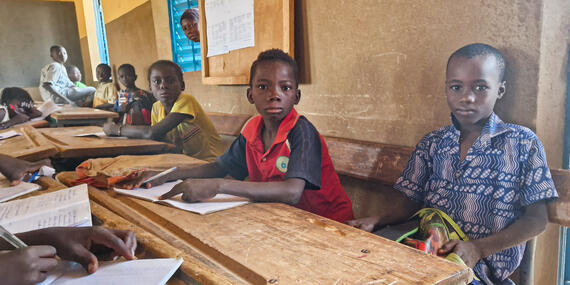
Text and photos by Bénédicte Bama Toé in Ouagadougou
It’s 7 a.m. and the sun is already high above Kaya – a town in Burkina Faso’s north-central region.
Hadaré, a lively 10-year-old, hurries to eat his breakfast before heading to the local public school. This year he enters the third year of primary school.
"I'm happy to go to school,” he said, all smiles. “I play a lot with my friends and learn to write, read and count."
Hadaré explains that when he grows up, he would like to be able to “protect his family.”
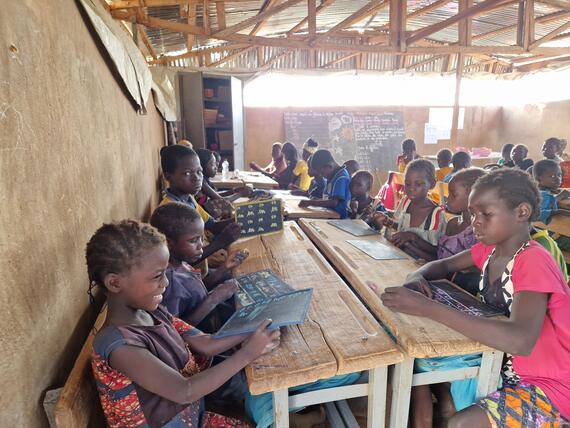
Dimassa B school hosts 622 children, 615 of whom are internally displaced, including Hadaré. He and his parents arrived in Kaya four years ago after fleeing Daké, a village around 100 km from Kaya, because of insecurity and attacks in the area.
For Hadaré's mother, Fatmata, the fact that her children can attend school free of charge is a godsend. “We arrived in Kaya destitute, with no money, and worried about our children's future,” she said.
She had no idea that public schools would take in her children without asking for payment. “When I see them go to school my heart is full of hope, because they are the next generation. They'll have a better future than ours," she said.
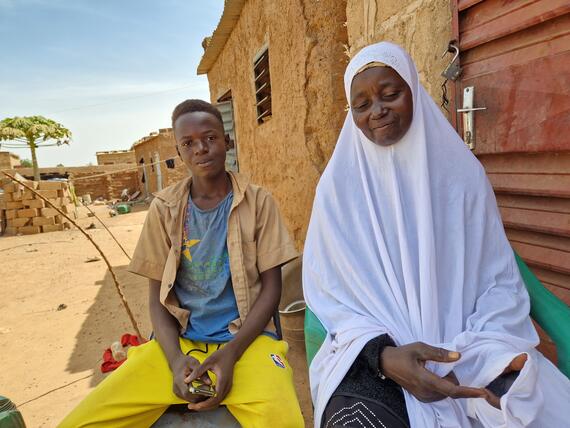
Fatmata’s story is similar to Aïssa’s. In her sixties and also displaced, Aïssa is President of the School Mothers’ Association. She and her family arrived in Kaya in 2019. For three days they travelled 11 km on carts, from Nagraogo to Barsalogho, then 45 km from Barsalogho to Kaya.
Arriving in the middle of the school year, her children were unable to start school until the following term.
Aïssa’s daughter Edith, currently in fifth grade, returned to school. “She'll be better off than me, and that's the wish of every parent,” explained Aïssa.
Her 16-year-old grandson, Amado, still shows signs of trauma from the violence that forced his family to leave Nagraogo. “They killed my uncle,” he said, after a long silence.
Amado attends the local high school, but he wants to return to his village with his grandmother. “Grandma suffers here,” he said with sadness. “You have to buy everything: water, wood, everything. In Nagraogo, it wasn't like that. She used to sell her porridge and earn money."
Despite all the difficulties of daily life, Amado has good grades: last year he obtained an average of 14 out of 20.
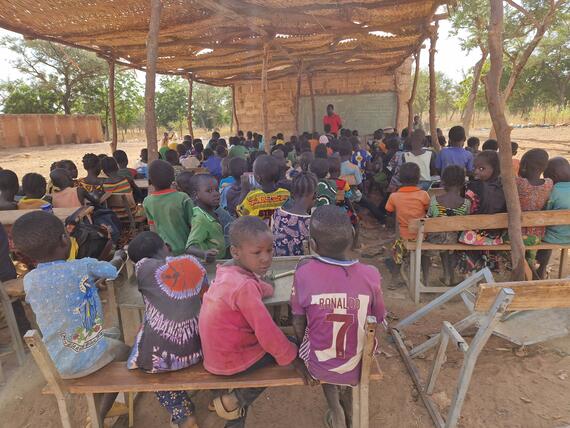
Like Edith, Amado and Hadaré, many internally displaced people have returned to the classroom thanks to the Government’s efforts, with the support of the United Nations Children's Fund and other humanitarian organizations. Thanks to these efforts, the Dimassa and Koomlakré schools started the new academic year with peace of mind.
At the beginning of September, Koomlakré was one of 230 schools providing shelter for more than 50,000 displaced people who had fled violence in Burkina Faso. But when humanitarian organizations provided shelter kits and essential household items, the school was freed up and the new school year began on 15 September.
Youssoufou, Koomlakré’s Principal, explained: “At the beginning of September, around 500 [displaced] people occupied all of the school's classrooms. For this new school year, we are welcoming 632 pupils, including 459 displaced pupils.”
Even though these schools have reopened, there are major challenges ahead, not least due to the massive influx of new children.
“Our lack of classrooms stands in stark contrast to our pupil numbers,” said Youssoufou. “There are between 100 and 140 pupils per class. There is only one water pump for the 1,500 pupils in the surrounding schools, and two functional latrines.”
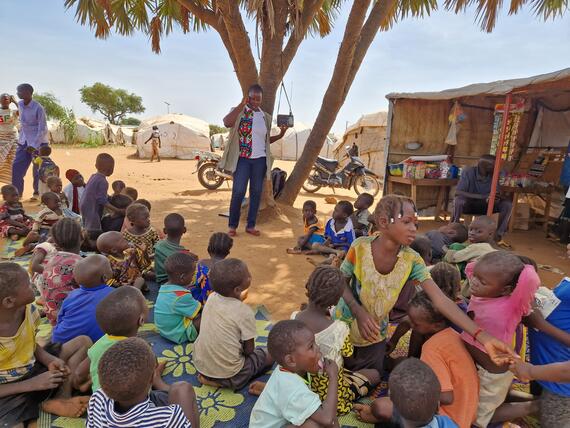
In response to the education system’s difficulties, the Government has worked with humanitarian organizations specializing in education to set up initiatives including temporary learning spaces, a fast-track schooling strategy and a radio education programme. According to the Director of Radio Manégada in Kaya, in 2022 the programme helped educate at least 13,000 children in five of the region's communes (Kaya, Barsalogho, Pensa, Tougouri and Bourzanga).
Albert Sawadogo, father of two young girls who listen to the radio programmes, noted a marked change in his daughters’ awareness: “They're the ones who teach me the hygiene rules at home now.”
Barkibila Sawadogo, the provincial Director of Education, praises these initiatives, which are providing educational continuity for displaced children – a priority for the authorities. For him, the challenges remain numerous, namely providing school kits, immediately installing temporary learning spaces in communes that do not have them, and capacity-building for teachers in psychosocial care for displaced pupils.
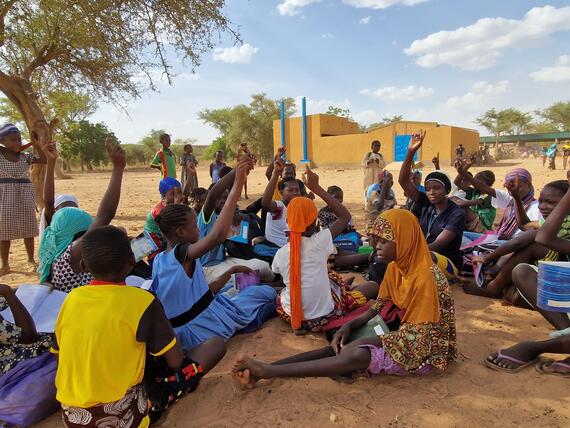
Far away from these concerns, in the shade of a tree at the Koomlakré school, a group of young girls are conscientiously studying. Among them are Asseta, who dreams of becoming a teacher, and Pascaline, who plans to become a doctor. Full of dreams of the future, they long to get started so that the children of Burkina Faso can once more find smiles, peace and well-being.
